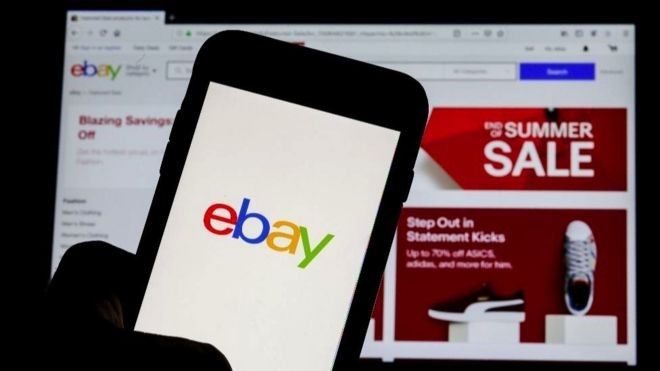How Corona changed the world of online shopping
There has been a big boom in online shopping in the Corona era. During this time, online shopping of things like grocery, books, beauty supplies, children’s goods has been fierce. People are resorting to online shopping indiscriminately to get goods to their doorstep without any contact.
These include both essential and non-essential items. In April, people trapped in their homes due to a lockdown in Canada were shopping for canned quail eggs, sitar strings and trampolines for children online.
The stress of this epidemic along with things like haphazard shopping and hoarding has made a big impact on our shopping habits.
Although online shopping has been going on for decades, but in fact it has only recently come into the mainstream. Amazon has been with us since the mid-90s, but since 2010 the share of online shopping in the US has been slightly over 6 percent of total retail sales.
and now? In terms of total sales in the UK, online sales were 3% in 2006, which has increased to 19% in 2020. Due to the epidemic, it increased to 30% in April 2020.
In May 2020, sales of non-store retailers in the US increased to 31 percent.
It has taken the shape of a revolution in emerging countries. There will be around three billion internet users in these countries by 2022. According to the figures of Boston Consulting Group, this number will be three times more than developed countries.
Online sales in retail in China are already 20%. This figure is larger than countries like US, UK, Germany and France.
Digitally effective spending – which also includes purchases where people search for things online and buy them offline – is going to be close to $ 4 trillion in emerging markets.
Before Kovid-19, there was never such dependence on internet for shopping in our daily life. A few decades ago, online shopping was considered a big thing. At that time having access to the internet was a big thing.
After all, how did online shopping become a part of our lives, and what will the things be like after the end of the epidemic?
Where did you start
In 1984, a 72-year-old grandmother named Jane Snowball was sitting on her lounge in Gateshead, England. He used television’s remote control to order margarine, cornflakes and eggs.
Jonathan Reynolds, associate professor of retail marketing and deputy dean of Oxford University’s Sad Business School, says he used the videotex system developed by English inventor Michael Aldrich.
Aldrich took his TV and turned it into a computer terminal. She used to make a shopping list on her TV screen using Videotex technology and her order was called by calling her local Tesco. After this, goods were delivered to their home. It was all like magic.
Reynolds explains, “Initially it was considered as a social service for the elderly and marginalized sections.”
At that time, Aldrich and Snowball could hardly have known that their small experiment would one day lay the foundation of a $ 186 billion industry in the UK.
After this initial grocery service in the field of online shopping, the next major innovation took place in 1994. At that time Daniel M. Coen, a 21-year-old computer expert, started an online marketplace called Netmarket.
It was not only like a shopping mall, but it was also the first digitally secured online transaction here.
The first purchase was a Sting CD sold for $ 12.48.
Since then, the initial Internet – which had the gritty voice of dial-up – started getting involved in people’s lives. And although virtually all big companies are online today, in the initial days only a few companies were working on e-commerce strategy.
One of them was Pizza Hut. In 1994, this American chain started selling pizza online through its PizzaNet portal. It was a flat, gray website that looked as ancient as you might think. In this, only the fields with the customer’s address and phone number were there.
However, in 1994, Amazon was also launched. At that time this site used to sell books extensively. EBay in 1995
Rakuten, Japan’s largest ecommerce site, came into the market after two years. In the last few years it has expanded to many western countries.
Alibaba of China was born in 1999. These companies were setting the stage for the beginning of an online shopping phase.
Thomai Serdari, Adjunct Professor at the Stern School of Business at New York University, says that in the mid-1990s, globalization was also an important reason that helped make ecommerce a profitable and profitable business.
The connected world gave the ability to increase production rapidly. She says, “Customers were eager to get the best or acceptable product at a lower price. The Internet has given customers the power to buy the product after a thorough investigation.”
Serdari says that although sites like Amazon and eBay provided platforms for online shopping, the real reason was customers whose online behavior has become a huge success today due to changes in behavior.
Increasing dominance
The most important step towards online shopping came during 2017.
According to the Pew Research Center, “By the end of 2016, online shopping had become a common habit for many Americans.”
Eight out of every 10 Americans used computers or phones for online shopping that year. In the year 2000, only 22 percent of people had done online shopping.
The year of 2017 is important because during this time 80 percent of the world population had access to smartphones.
The 2019 data shows that e-commerce accounts for 16 percent of total sales in the US. This means a cost of $ 601.75 billion.
According to global ecommerce software giant Shopify, online sales across the world reached a record level of $ 3.5 trillion in 2019.
In the United States, in the first quarter of 2020, this figure increased by 14 percent over the same period of 2019.
2020 not only changed the importance of online shopping, but it also accelerated its growth.
Barbara Kahn, a marketing professor at the Wharton School of Business at the University of Pennsylvania, says the epidemic has brought the situation for online shopping to come after two to three years today.
Ecommerce sales in the US increased by 49 percent between March 2020 and April 2020. It has been led by Onlan Grossery, which has grown by 110 percent in its daily sales.
Online shopping will continue
There has been a big change in the picture of online shopping due to the widespread adoption of ecommerce. Apart from this, there has also been an increase in merchants coming forward for online shopping.
“Around 30 per cent of businessmen sell goods online,” says Serdari, but Kovid-19 has forced many retailers to use it as a means to sustain themselves.
Despite positive signals about the future of online shopping, customers are keeping their expenses under control due to the epidemic.
The big question is that even after the offline shops open, will the customers continue to shop at online stores and will give growth to this business or not.
Kan says that hybrid shops can also grow. She gives an example of Amazon which is in both physical storefront format with services like online shopping and Amazon Go.
The company keeps track of your online shopping habits and has a grocery ready at its physical shop from where you can take your grocery while returning home from work.
But, what will happen after the epidemic?
Although the beginning of online shopping has increased due to social distance and the need for fear of infection, this trend may continue even after the epidemic ends.




